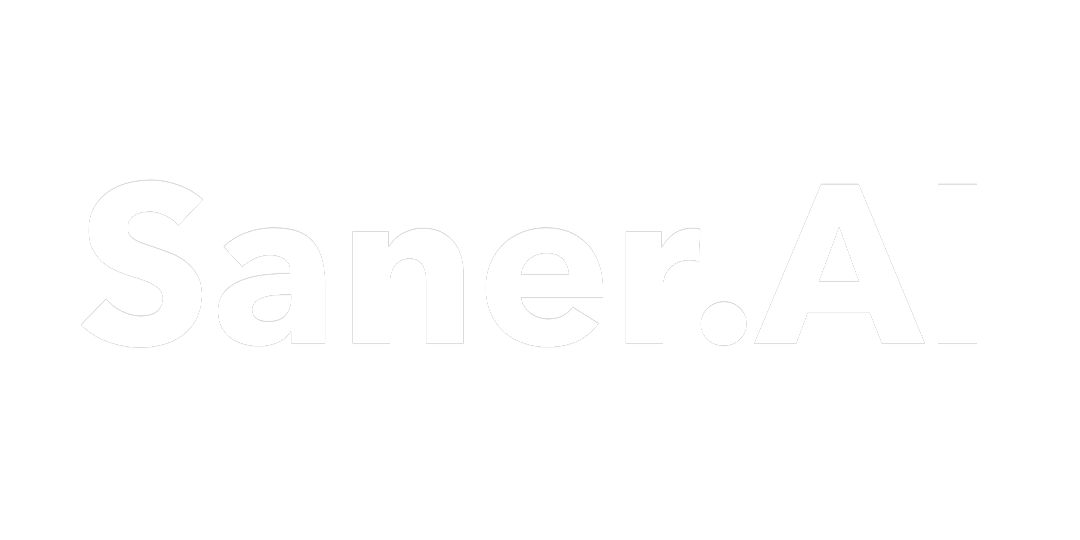- ADHD Guide: 5 Essential Strategies to Manage ADHD without medication
- I. An Overview about ADHD
- II. What is ADHD?
- III. What causes ADHD?
- IV. ADHD Symptoms
- V. Diagnosis of ADHD
- VI. Impact of ADHD
- VII. Strategies to Manage ADHD
- A. Cognitive-Behavioral Therapy (CBT)
- B. Lifestyle Management
- C. Creating ADHD-Friendly Environments
- D. Coping Skills, Self-Care, and Stress Management
- E. Techniques and Tools for ADHD Management
- VIII. Conclusion
ADHD Guide: 5 Essential Strategies to Manage ADHD without medication
ADHD (Attention-Deficit/Hyperactivity Disorder) is a neurodevelopmental disorder that is characterized by symptoms such as difficulty staying focused and paying attention, difficulty controlling behavior, and hyperactivity
In 2011, approximately 6.1 million children (11% of children/adolescents aged 4 to 17 years) had ADHD diagnosis in the United States
Approximately 8.7 million adults in the United States have ADHD. Globally, the prevalence of persistent adult ADHD is estimated to be 2.58% (139.84 million) and symptomatic adult ADHD is estimated to be 6.76% (366.33 million) in 2020
ADHD rates have been increasing in recent years. While the exact reasons for the increase in ADHD diagnoses are not entirely clear, some experts suggest that it may be due to a combination of factors like increased awareness, changes in diagnostic criteria, and environmental/lifestyle influences.
Understanding ADHD is crucial not only for those who live with it but also for their families, educators, and employers to foster environments that support effective management of the condition.

ADHD is characterized by patterns of inattention, hyperactivity, and impulsivity that are inconsistent with a person’s developmental level.
ADHD is divided into three subtypes:
1. Predominantly Inattentive Presentation: Characterized by symptoms of inattention, such as difficulty paying attention to details, getting distracted easily, and struggling to organize thoughts and tasks.
People with this subtype may appear daydreamy or sluggish, and often have trouble following directions.
2. Predominantly Hyperactive-Impulsive Presentation: Characterized by symptoms of hyperactivity and impulsivity, such as fidgeting, difficulty sitting still, excessive talking, and acting without thinking about consequences.
People with this subtype can be disruptive, especially in classroom settings.
3. Combined Presentation: A combination of symptoms from both inattention and hyperactivity/impulsivity.
Despite its prevalence,
there are many misconceptions surround ADHD:
1. ADHD is not a real medical condition, it’s just a condition of the child’s will or bad parenting
—> ADHD is a real, recognized medical disorder, not a result of bad parenting or a child’s choice to misbehave.
2. ADHD is only a childhood disorder
—>ADHD is a lifelong condition, with symptoms often persisting into adulthood. Around 50-80% of children with ADHD continue to have symptoms as adult
3. Having ADHD means the person is lazy or dumb
—> ADHD has nothing to do with a person’s intellectual ability. Here are some highly intelligent people have ADHD.
It’s important to clear up those misconceptions about ADHD so that we can understand it better and provide appropriate solution for it
ADHD is believed to result from a combination of genetic and environmental factors.
- Research indicates that genetics play a significant role in the development of ADHD, with the condition often running in families. Children with ADHD have a 1 in 4 chance of having a parent with ADHD, and it is likely that other close family members, such as siblings, may also have the disorder.
- Additionally, certain environmental factors, such as prenatal exposures to substances like alcohol or nicotine, significant head injuries, prematurity, and exposure to toxins, can increase the risk of developing ADHD.
- Changes in brain structure, brain function, brain chemistry (specifically involving dopamine levels), and brain injury have also been linked to ADHD.
Some people think that ADHD happens because:
- Eating too much sugar
- Watching TV or playing lots of video games
- Poor parenting
However, the Centers for Disease Control and Prevention (CDC) emphasizes that there is not enough proof that any of these things directly cause ADHD.
While the exact cause of ADHD is not fully understood, the interplay between genetic predisposition and environmental influences is thought to be responsible for the development of the condition

ADHD symptoms vary widely but generally include difficulties with maintaining attention, hyperactivity, and impulsive behavior.
In adults, ADHD might manifest as poor time management skills, restlessness, and issues with self-esteem.
1. Inattention
- Difficulty paying attention to details or making careless mistakes
- Trouble focusing on tasks or activities
- Appearing to not listen when spoken to directly
- Struggling to follow through on instructions or finish tasks
- Difficulty organizing tasks and activities
- Avoiding or disliking tasks that require sustained mental effort
- Frequently losing things needed for tasks and activities
- Being easily distracted
- Forgetfulness in daily activities
2. Hyperactivity-Impulsivity
- Fidgeting, tapping hands or feet, or squirming in seat
- Leaving seat in situations where remaining seated is expected
- Feeling restless or having an “internal motor”
- Talking excessively
- Blurting out answers before questions have been completed
- Difficulty waiting one’s turn
- Interrupting or intruding on others
3. Emotional Dysregulation
- Mood swings and emotional sensitivity
- Difficulty managing frustration and anger
- Low self-esteem
Diagnosing ADHD involves a comprehensive evaluation with a qualified mental health professional.
There is no single test to diagnose ADHD, and many other problems, like anxiety, depression, sleep problems, and certain types of learning disabilities, can have similar symptoms.
Diagnosing ADHD typically includes a detailed interview, symptom checklists, and potentially psychological testing.
You click here to learn more about ADHD Diagnosis
Academic Performance:
- ADHD can link to poor grades, difficulties in reading and mathematics, and challenges in completing tasks and paying attention to details, all of which can affect academic achievement
- The inattentive side of ADHD, characterized by issues like failing to finish work, daydreaming, and disorganization, can directly impact academic performance
Work Performance:
- ADHD can significantly impact job performance, particularly in tasks that require sustained attention, organization, and time management.
- Research suggests that individuals with ADHD tend to struggle with these aspects of work due to difficulties in focusing, following instructions, organizing, and completing tasks efficiently
Social Conditions:
- ADHD can lead to disturbances in family dynamics, causing relationship problems, less family togetherness, and increased conflict
- Families of individuals with ADHD may experience strain on relationships, reduced work productivity, and increased stress
If you have adult ADHD, you probably take medicine to ease your symptoms. But alongside it, there are strategies to manage ADHD without medication

A. Cognitive-Behavioral Therapy (CBT)
Cognitive Behavioral Therapy (CBT) for ADHD is a therapeutic approach that focuses on identifying negative thought patterns change them into helpful ones
It works by helping individuals with ADHD recognize and challenge unhelpful beliefs, develop coping strategies, and improve executive functioning skills to manage symptoms effectively.
How does it work
In the beginning sessions, you and your therapist will talk about what you want to improve.
This usually includes things you deal with every day, like learning to make plans, handle time better, or complete projects. Then CBT help identifying thoughts pattern that hinder you & challenge those beliefs
Together, you’ll make a plan to achieve your goals.
You will have to do some homework between sessions to practice your new skills in real-life situations.
CBT Benefits:
Overall, the evidence suggests that CBT can provide meaningful benefits for adults with ADHD, both in improving core ADHD symptoms as well as associated difficulties like mood and emotional regulation.
- Improving Emotional Regulation
- Enhancing Time Management and Organization
- Reducing Distractibility and Improving Focus
- Addressing Negative Thought Patterns

B. Lifestyle Management
Exercise, sleep, and nutrition play crucial roles in managing ADHD symptoms by addressing various aspects of the condition. Here’s how they help
Exercise helps boost brain chemicals like dopamine, serotonin, and endorphins, which can improve mood, attention, and sleep for individuals with ADHD
Studies suggest that exercise can create epigenetic changes that counteract negative events and improve brain growth, self-regulation, and executive function, all of which are areas of difficulty for individuals with ADHD
Here are 3 suitable exercise practice for ADHDer
Sleep
Sleep disturbances are common in adults with ADHD and can exacerbate the core symptoms of the disorder
Extending sleep duration has been shown to benefit patients with ADHD in terms of attentional and behavioral functioning
Adequate sleep is also essential for brain growth, memory consolidation, and emotional regulation, all of which are crucial for managing ADHD symptoms
Sleep hygiene practices, such as maintaining a consistent bedtime routine, minimizing stimulants before bed, and creating a calming environment, can help people with ADHD improve their sleep quality
How to get better sleep as ADHDer?
- Establish a Consistent Routine: Go to bed and wake up at the same time every day to help regulate your body’s internal clock and improve sleep quality
- Create a Relaxing Bedtime Routine: Engage in calming activities before bed, such as reading a book, listening to soothing music, or taking a warm bath, to prepare your body and mind for sleep
- Limit Stimulating Activities & Stimulants: Avoid stimulating activities like watching TV, using electronic devices, or engaging in intense physical or mental tasks close to bedtime, as they can interfere with falling asleep. Also Limit or avoid caffeine and stimulants close to bedtime, as they can disrupt sleep and exacerbate ADHD symptoms
- Practice Relaxation Techniques: Incorporate relaxation techniques like deep breathing exercises, meditation, or progressive muscle relaxation to calm your mind and body before bedtime
- Maintain a Comfortable Sleep Environment: Ensure your sleep environment is conducive to restful sleep by keeping the room dark, cool, and quiet, and investing in a comfortable mattress and pillows
Nutrition
Balanced nutrition is fundamental for brain health and optimal cognitive function, making nutrition choices a crucial aspect of ADHD management. Focus on food with protein, healthy fats (Omega-3), Zinc
- Protein-rich foods: Lean beef, pork, poultry, fish, eggs, beans, nuts, soy, and low-fat dairy products can have beneficial effects on ADHD symptoms. Protein-rich foods are used by the body to make neurotransmitters, the chemicals released by brain cells to communicate with each other. Protein can prevent surges in blood sugar, which increase hyperactivity and impulsivity
- Complex carbohydrates: Fruits like apples, kiwis, and berries, whole grains such as oatmeal, brown rice, quinoa, barley, and whole-wheat bread or pasta, and legumes like peas, beans, and lentils are less likely to spike blood sugar levels and help keep you feeling fuller for longer, which may help improve focus and attention
- Healthy fats: Omega-3 and omega-6 fatty acids, found in fatty fish like salmon, tuna, and mackerel, soybean, walnuts, flaxseeds, tofu, chia seeds, and avocados, may help support heart health, memory, and immune function. Some research also suggests that omega-3 and omega-6 fatty acids may help improve hyperactivity, impulsivity, and attention symptoms in ADHD
- Zinc: Zinc regulates the neurotransmitter dopamine and may make methylphenidate more effective by improving the brain’s response to it. Low levels of zinc correlate with inattention
- Iron: Iron is necessary for making dopamine. One small study found ferritin levels (a measure of iron stores) to be low in 84 percent of children with ADHD compared to 18 percent of controls. Low iron levels correlate with cognitive deficits and severe ADHD
- Magnesium: Magnesium is used to make neurotransmitters involved in attention and concentration, and it has a calming effect on the brain. All three minerals are found in lean meats, poultry, seafood, nuts, soy, and fortified cereals
- Vitamin C: Vitamin C helps modulate the synapse action of dopamine, a key neurotransmitter needed in treating ADHD. It is best to get vitamin C from fruits and vegetables, since pills are not as effective as vitamin C found in whole foods
- Vitamin D: Vitamin D has been associated with the aggravation and progression of ADHD. Therefore, maintaining adequate levels of vitamin D through sun exposure, supplements, or fortified foods is crucial
- B Vitamins: B vitamins, particularly B-6, seem to increase the brain’s levels of dopamine, which improves alertness. Vitamin B-6 supplements have been found to improve some IQ scores in children with ADHD

C. Creating ADHD-Friendly Environments
Creating an ADHD-friendly environment involves several strategies that cater to the unique needs of individuals with Attention Deficit Hyperactivity Disorder (ADHD). Here are some key considerations to enhance focus, productivity, and overall well-being
- Minimize Distractions: Designate quiet spaces or areas with minimal distractions, such as noise-cancelling headphones, to help individuals with ADHD focus.
- Flexible Work Arrangements: flexible work schedules, including remote work options can help ADHDer who may struggle with time management or have difficulty staying on task.
- Reminder: Implement reminder system such as written instructions, reminder app to remember understand expectations and stay organized.
- Workspace Alterations: Make workspace alterations, such as providing a dedicated workspace or adjusting the layout to accommodate individual needs, to enhance focus and productivity.
- Structured Work Environment: Establish a structured work environment with predictable routines, clear expectations, and minimal changes to help ADHDer feel more secure and focused.

D. Coping Skills, Self-Care, and Stress Management
Self-care and stress management techniques are crucial for us ADHDer and here are some effective self-care and stress management techniques
- Mindfulness and Meditation: Mindfulness practices like meditation, deep breathing exercises, or progressive muscle relaxation can help individuals with ADHD manage stress, improve focus, and regulate emotions
- Structure and Routine: Establishing a structured routine can help individuals with ADHD feel more secure and focused. This includes setting specific times for waking up, eating meals, exercising, and going to bed
- Social Support: Building and maintaining social connections through support groups, therapy, or online communities can help individuals with ADHD manage stress and improve emotional well-being
- Digital Detox: Limiting screen time and taking regular breaks from technology can help individuals with ADHD manage stress and improve focus. Here 3 apps to reduce screen time
- Self-Compassion and Positive Self-Talk: Practicing self-compassion and positive self-talk can help individuals with ADHD develop a more positive outlook and improve emotional resilience

E. Techniques and Tools for ADHD Management
Last but not least, managing ADHD involves have practical, helpful techniques and tools to enhance focus, productivity, and organization. Here are some effective strategies tailored to individuals with ADHD:
Note-Taking
Note-taking or information management is a fundamental skill that can significantly impact learning and productivity, especially for individuals with ADHD
However, many ADHDer have problems with this skill. Here are 4 common struggles of ADHDer with Note taking
1. ADHD-related inattentiveness makes it challenging for individuals to stay focused during lectures and split their attention between listening and writing.
2. ADHD can make it difficult for individuals to organize their notes in a coherent and logical manner.
They may struggle to keep their notes dated, labeled, and easy to review.
3. Individuals with ADHD may struggle to effectively review their notes and retain the information, as they often have trouble with memory and information processing.
4. Many individuals with ADHD are not aware of or do not utilize effective note-taking strategies that cater to their specific learning needs.
Most of current process or apps are not designed with ADHD in mind, that’s why finding the note taking method & app that is ADHD friendly (Simple UX, powerful function like natural language search & AI) is crucial.
Most of current process or apps are not designed with ADHD in mind, that’s why finding the note taking method & app that is ADHD friendly (Simple UX, powerful function like natural language search & AI) is crucial.
Check out What’s the ideal ADHD Note-taking app look like & One Ideal app for it & the effective way to manage meeting notes
Time Management Strategies
Managing time effectively is a common challenge for individuals with ADHD, In a 2019 article, it was found that individuals with ADHD often struggle with planning and managing their time well. This difficulty can make it tough to get things done efficiently, leading to stress in various settings like school, university, or work. It can also make it challenging to organize personal time effectively.
Here are 10 commons challenges with Time management for ADHDer
- Difficulty estimating how much time is passing.
- Predicting how long various tasks might take.
- Recalling time-based information from working memory.
- Ordering events in time.
- Struggling with self-regulating time.
- Underestimating the duration of tasks.
- Difficulty with time perception and time blindness.
- Challenges with estimating task durations accurately.
- Difficulty gauging how much time tasks will take.
- Problems with predicting when events happened or are supposed to happen.
That’s why Implementing specific techniques can help improve productivity and reduce procrastination. Some of the key techniques are: Pomerado, Time-block
Check out to Definitive guide to Time management strategy for ADHDer
Task Management Strategies
It’s evident that individuals with ADHD encounter numerous obstacles when it comes to task management. Here are 4 key challenges
Here are 4 key challenges
1. Difficulty maintaining focus and attention on tasks, leading to problems with time management, organization, and prioritization
2. Task Switching: Task switching can be daunting for people with ADHD, as we often struggle with transitions between activities or tasks. Whether it’s shifting focus from one project to another or transitioning between work and leisure, the process of task switching can be significantly frustrated.
3. ADHD Task Paralysis: Task paralysis, or the feeling of being overwhelmed by the sheer number of tasks to tackle, is a common struggle for individuals with ADHD. This can make ADHDer feel stuck and unable to make progress on their goals.
4. ADHD Task Initiation: Task initiation is a fundamental aspect of productivity, yet individuals with ADHD often struggle with procrastination and difficulty getting started on tasks. Whether it’s about writing a post or a washing dishes, the process of initiating tasks can feel overwhelming and insurmountable.
In today’s digital age, numerous task management tools and apps are available to help human to organize their daily activities and prioritize tasks effectively. These tools typically offer features such as task lists, reminders, and calendar integration, allowing users to track their progress, set deadlines, and stay on top of commitments.
Check out to Definitive guide on how to get things done for ADHDer

Understanding ADHD is the first step toward managing its symptoms effectively
By debunking myths, understanding the underlying causes, and implementing tailored strategies, individuals with ADHD can lead productive and fulfilling lives.
It’s essential for anyone with ADHD to seek professional help and carry out various strategies to manage their symptoms effectively.
Remember, you are not alone in this journey, and with the right tools and support, you can navigate the complexities of ADHD with confidence and success
At Saner.ai, our goal is to create a product that’s simple & powerful for everyone to use, especially for those with ADHD. We want to ultimately x10 your productivity and creativity. Join us on this journey as we strive to streamline the thinking and working flow for you
With heart,
Saner.ai Team





